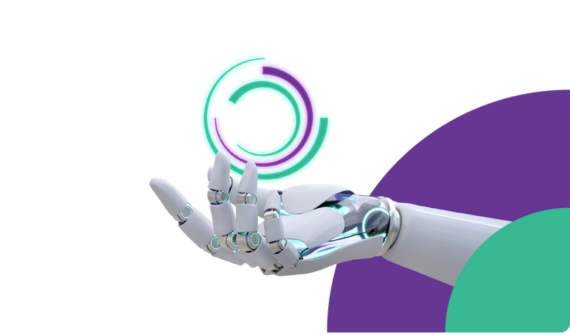Top 20 Talent Analytics KPIs and Metrics to Monitor in 2023
In today's highly competitive business landscape, organizations recognize the critical importance of talent analytics in driving strategic decision-making and optimizing their workforce.
Talent analytics KPIs and metrics serve as powerful tools to assess and measure the effectiveness of talent management strategies.
As we step into 2023, staying ahead requires a keen focus on tracking the right talent analytics indicators.
In this article, we delve into the top 20 talent analytics KPIs and metrics that forward-thinking organizations should monitor closely to gain valuable insights into their talent acquisition, development, and retention efforts.
From measuring employee performance and productivity to assessing diversity and inclusion, these metrics offer a comprehensive view of the workforce's impact on organizational success.
By harnessing the power of these metrics, organizations can make data-driven decisions, identify areas for improvement, and drive meaningful change to foster a thriving, high-performing workforce in the dynamic year ahead.
Importance Of Talent Analytics Metrics

Talent analytics metrics play a crucial role in modern HR practices, enabling organizations to make data-driven decisions and optimize their talent management strategies.
Here are some key reasons highlighting the importance of these metrics:
1. Improved Hiring Processes
They provide insights into recruitment effectiveness, helping organizations identify the most successful sourcing channels, evaluate candidate quality, and reduce time-to-hire.
2. Enhanced Employee Performance
By tracking performance metrics and training analytics, organizations can measure individual and team productivity, identify top performers, and pinpoint areas for improvement to drive continuous growth and development. Experience roadmaps can then be created in order to increase performance and engagement.
3. Effective Succession Planning
They enable organizations to identify high-potential employees, assess their readiness for future roles, and create robust succession plans to ensure a smooth transition of talent within the organization.
4. Retention And Engagement Strategies
By analyzing metrics related to employee satisfaction, turnover rates, and engagement levels, organizations can identify factors that impact retention and implement targeted initiatives to improve employee experience and foster loyalty. They can then use helpful tools to analyze engagement and employee performance.
5. Diversity And Inclusion
They help organizations measure and monitor diversity and inclusion efforts, track representation across various demographics, and identify areas where diversity initiatives can be enhanced to create a more inclusive work environment.
6. Strategic Workforce Planning
By analyzing workforce demographics, skills gaps, and employee turnover patterns, they inform effective workforce planning strategies, ensuring the right talent is available at the right time to meet organizational objectives.
7. Cost Optimization
They help organizations optimize costs associated with recruitment, training, and development by identifying areas where investments yield the highest return on investment (ROI) and reducing unnecessary expenses.
In summary, talent analytics metrics provide valuable insights that enable organizations to attract, develop, engage, and retain top talent effectively.
By leveraging these metrics, organizations can align their talent management strategies with business goals, drive informed decision-making, and gain a competitive edge in the ever-evolving landscape of talent management.
Top 20 Talent Analytics KPIs

1. Employee Turnover Rate
This metric measures the percentage of employees who leave the organization voluntarily or involuntarily within a specific time period.
Tracking turnover helps identify potential issues in employee satisfaction, organizational culture, or management practices that may contribute to high attrition rates.
2. Time-To-Fill
This KPI measures the average time it takes to fill a job vacancy from the moment it is opened.
Monitoring this metric helps organizations evaluate the efficiency of their recruitment process and make necessary adjustments to reduce the time it takes to onboard new talent.
3. Cost Per Hire
This metric calculates the average cost incurred to recruit and onboard a new employee.
By assessing recruitment expenses such as advertising, agency fees, and onboarding costs, organizations can optimize their hiring budget and identify cost-effective strategies.
4. Offer Acceptance Rate
This KPI measures the percentage of job offers accepted by candidates.
A high acceptance rate indicates effective recruitment practices, attractive compensation packages, and positive employer branding.
5. Quality Of Hire
This metric assesses the performance and contribution of new hires to determine the effectiveness of the hiring process.
By evaluating factors such as productivity, job performance, and cultural fit, organizations can refine their selection criteria and improve the quality of future hires.
6. Employee Productivity
This KPI measures the output and efficiency of employees to evaluate their overall contribution to the organization.
Tracking productivity helps identify areas for improvement, optimize workflows, and ensure that employees are performing at their best.
7. Employee Engagement
This metric tracks the level of emotional commitment and satisfaction among employees. Engaged employees are more likely to be motivated, productive, and committed to the organization's goals.
Regularly measuring employee engagement enables organizations to identify factors that impact engagement levels and implement strategies to enhance employee satisfaction.
8. Performance Ratings
This KPI evaluates employee performance against predefined criteria to assess individual and team effectiveness.
Performance ratings provide valuable insights into areas of strength and areas that require improvement, enabling organizations to provide targeted feedback, training, and development opportunities.
9. Training And Development ROI
This metric measures the return on investment of training and development initiatives.
By assessing the impact of training programs on employee performance, skill development, and overall organizational outcomes, organizations can allocate resources effectively and focus on programs that deliver the highest ROI.
10. Time-To-Productivity
This KPI tracks the time it takes for new hires to become fully productive in their roles.
Reducing the time-to-productivity ensures that new employees quickly contribute to the organization's goals and objectives.
11. Diversity And Inclusion Metrics
These metrics measure the representation and inclusivity of diverse groups within the organization.
Tracking metrics such as gender, ethnicity, and age diversity helps organizations assess their progress in creating a diverse and inclusive workforce, fostering innovation, and reducing biases.
12. Talent Pipeline Strength
This metric assesses the readiness and availability of internal talent for future leadership roles.
Evaluating the depth and quality of the talent pipeline helps organizations identify potential successors and develop targeted development plans to fill critical positions.
13. Succession Readiness
This KPI evaluates the preparedness of employees to take on key positions in the organization.
Assessing succession readiness enables organizations to identify skill gaps, provide targeted training and development, and ensure a smooth transition of talent.
14. Employee Referral Rate
This metric measures the percentage of new hires that come through employee referrals.
A high referral rate indicates a positive employee experience, strong employee advocacy, and a successful employee referral program.
15. Absenteeism Rate
This talent analytics KPI tracks the percentage of scheduled work time missed by employees due to absence.
Monitoring absenteeism helps organizations identify patterns, assess the impact on productivity, and address potential issues related to employee well-being and work-life balance.
16. Skill Gap Analysis
This metric identifies the gaps between required skills and existing employee skills to address training and development needs.
Conducting a skill gap analysis enables organizations to design targeted training programs, recruit externally for specific skills, or provide opportunities for upskilling and reskilling.
17. Internal Mobility Rate
This talent analytics KPI measures the percentage of employees who move into different roles or positions within the organization.
Promoting internal mobility fosters employee growth, retention, and development while leveraging existing talent within the organization.
18. Employee Net Promoter Score (eNPS)
This metric determines employee satisfaction and the likelihood of recommending the organization as a place to work.
Measuring eNPS helps organizations gauge overall employee sentiment, identify areas for improvement, and enhance the employee experience.
19. Employee Wellness Index
This KPI evaluates the overall well-being and satisfaction of employees in terms of work-life balance, stress levels, and access to wellness programs.
Monitoring the employee wellness index helps organizations prioritize employee health and implement initiatives that support well-being.
20. Talent Acquisition Channel Effectiveness
This metric assesses the performance and effectiveness of different recruitment channels in attracting top talent.
By analyzing the source of successful hires, organizations can optimize their recruitment strategy and allocate resources to channels that yield the best results.
These 20 talent analytics KPIs provide organizations with valuable insights into their talent management processes, allowing them to make informed decisions, drive improvements, and optimize their workforce for success.
By monitoring and analyzing these metrics, organizations can proactively address challenges, leverage strengths, and align their talent strategies with business goals.
Revolutionize Employee Training With Oreed: The Future Of Learning

Discover how Oreed's innovative platform empowers organizations to transform employee training, enhance skills, and drive success with personalized learning journeys and advanced analytics.
- Gain a 360-degree view of your employees with Oreed's comprehensive insights into their strengths, weaknesses, and training needs.
- Make evidence-based decisions for improving skills and performance using Oreed's advanced analytics.
- Develop customized training and courses that address the unique strengths and weaknesses of your team members.
- Measure the impact and effectiveness of your training programs with detailed analytics and reporting.
- Consolidate all your learning experiences into a single, user-friendly platform with Oreed's seamless learning experience.
- Increase productivity, efficiency, and profitability with Oreed's guided learning journeys and powerful training tools, leading to significant bottom-line results.
- Oreed's comprehensive learning platform aligns with KSA's 2030 vision by fostering the values of mastery and discipline among individuals, empowering them to develop expertise, sharpen their skills, and contribute to the realization of KSA's long-term objectives.
So why wait? Give Oreed a try today and see the difference it can make for your organization.
Promote lifelong learning through Oreed by experiencing the most powerful all-in-one training and development intelligent platform that streamlines all your organization's learning, training, and development activities in one place.
Final Thoughts
Monitoring top talent analytics KPIs in 2023 is crucial for optimizing the workforce.
These metrics offer valuable insights, empowering organizations to make data-driven decisions, address challenges, and leverage strengths for success.
FAQs
1. What is KPI in talent management?
In talent management, KPI (Key Performance Indicator) refers to a measurable metric or indicator that helps organizations assess and evaluate the effectiveness and success of their talent management strategies.
These KPIs provide valuable insights into various aspects of talent management, such as recruitment, employee performance, engagement, development, retention, and diversity.
By tracking and analyzing these metrics, organizations can identify areas for improvement, measure progress toward goals, and make informed decisions to optimize their talent management processes.
KPIs in talent management provide a quantitative and objective way to assess the impact and effectiveness of talent initiatives, enabling organizations to align their strategies with business objectives and drive overall success.
2. What are some of the talent analytics examples?
Talent analytics examples encompass a wide range of metrics and indicators that organizations use to gain insights into their workforce.
Some common examples include employee turnover rate, which measures the percentage of employees who leave the organization within a specific period; time-to-fill, which assesses the time taken to fill vacant positions; employee engagement score, which measures the level of employee satisfaction and commitment; performance ratings, which evaluate individual or team performance against predefined criteria; and diversity metrics, which track the representation of different demographic groups within the organization.
Other examples include training ROI, succession planning effectiveness, employee productivity metrics, and talent acquisition effectiveness.
These talent analytics examples provide organizations with valuable data to inform strategic decision-making, improve talent management processes, and optimize overall performance.